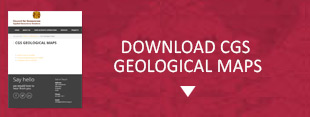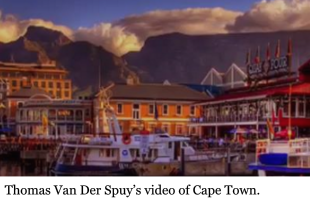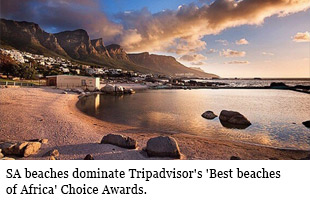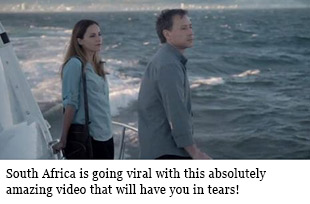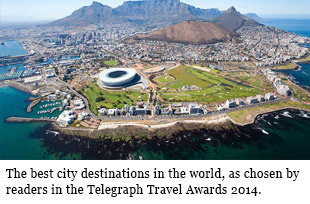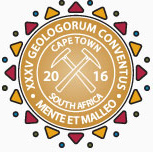
35TH INTERNATIONAL GEOLOGICAL CONGRESS
27 AUGUST - 4 SEPTEMBER 2016 | CAPE TOWN, SOUTH AFRICA
Sponsors



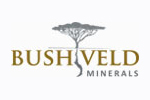


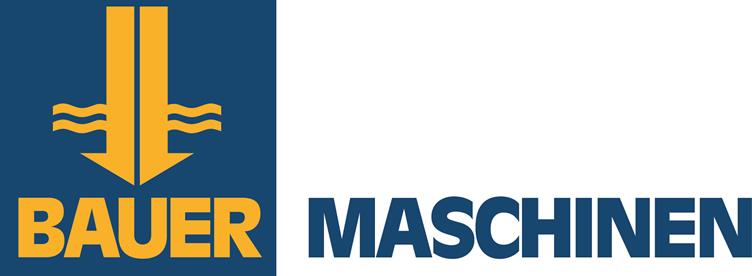










35 IGC SAGPGF





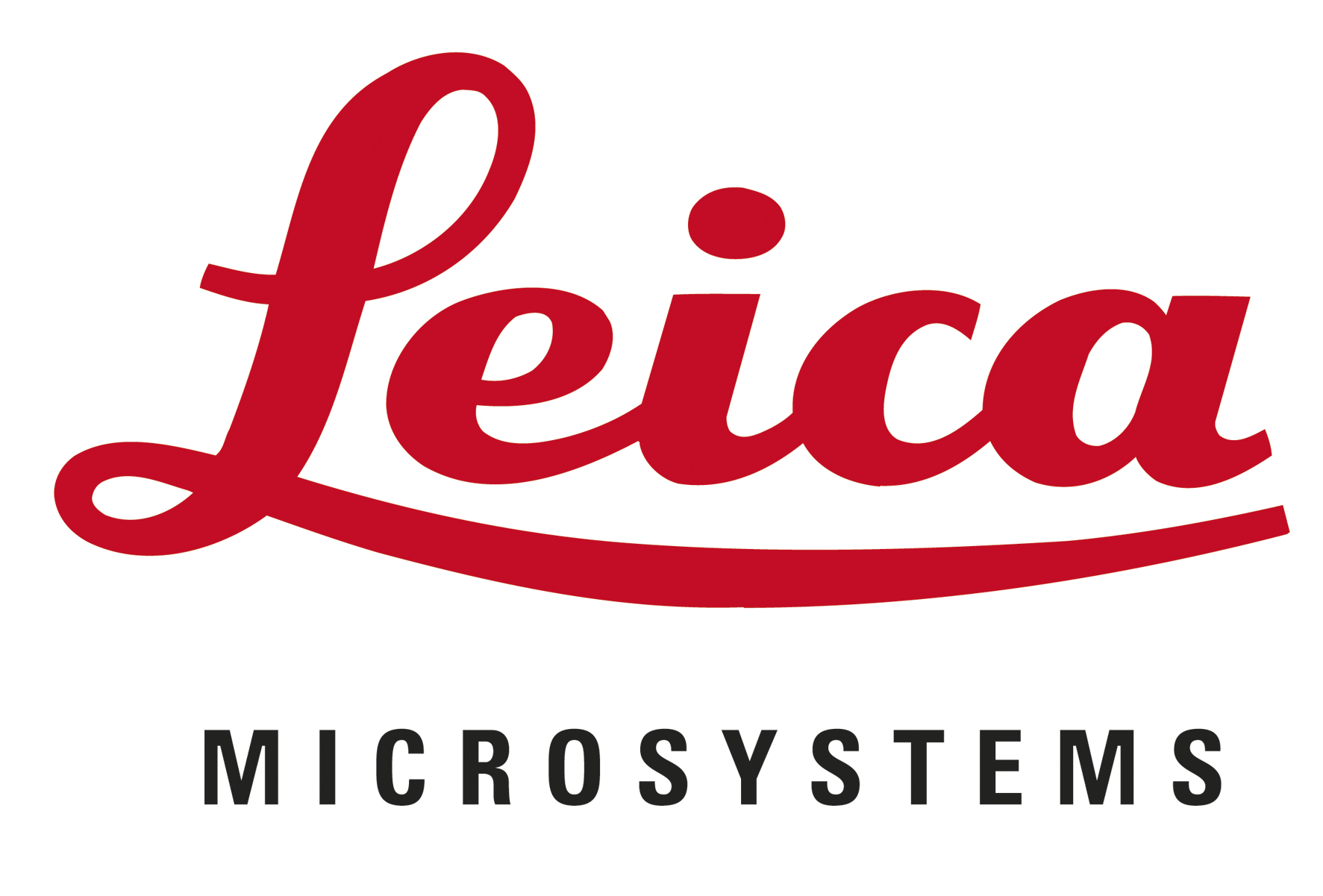

35TH INTERNATIONAL GEOLOGICAL CONGRESS
27 AUGUST - 4 SEPTEMBER 2016 | CAPE TOWN, SOUTH AFRICA
My IGC
Post 2 Eastern Bushveld Mpumalanga Drakensburg Escarpment and Kruger National Park
By Morris Viljoen, Tour Leader
This was a three in-one, post congress field trip. The first leg covered some highlights of the layered igneous rocks, including chromium, platinum and vanadium-rich layers of the Eastern Limb of the Bushveld Complex. The Bushveld is the largest and economically most important layered complex in the world and has been beautifully exposed by erosion caused by the Olifants River and its tributaries in the north east segment of the complex.
The second leg of the field trip covered the Eastern Escarpment of north eastern South Africa. Points of interest included the historic gold mining town of Pilgrims Rest as well as scenic sites along the escarpment edge. Visits to Bourkes Luck Potholes, calcareous tuffa waterfalls, as well as the spectacular Blyde River Canyon were of particular interest on this scenic leg of the excursion.
The third leg of the trip covered the central and southern portions of the world famous Kruger National Park, focusing on geology, landscapes and soil development and their relationship to ecozones. Excellent sitings of the Big Five as well as many other animals and birds were seen on numerous occasions and added to the excitement of the trip.
The distinguished group consisted of 40 participants from 15 different countries and included 15 PhD’s and 5 professors. There was one participant from South Africa in addition to tour assistant Alison Blackhurst and myself. I would like to thank Alison for her tremendous assistance on the trip very competent handling of various logistical issues that arose and for interacting so effectively and with all of the participants. Alison and I would like to thank the group for their patience and understanding of the problems that arose and Sam Monageng for his cautious and safe driving. Thank you also for your emails and favourable comments on the trip.
The group interacted extremely well and appreciated the classical geological features and scenery. In this regard visits to the Modikwa and Marula Mine properties were undoubtedly highlights with the remarkable continuity of the chromitite stringer at the top of the Merensky Reef being a feature that impressed everyone. On behalf of the participants I would again like to thank the mines for facilitating the visits and in particular, Wimpie Britz of Modikwa platinum mine and Bennie Cilliers of Marula platinum mine (as well as their colleagues), for arranging and conducting outstanding visits.
On the lighter side I had cautioned the group that at Magnet Heights we were likely to encounter locals doing their washing in a small stream at the site and laying it out to dry on the top dip surface of the Main Magnetite Layer. We were also likely to see cars being washed. What we encountered at the site was well described by Ronald Smith in an email circulated recently as follows: “In the event there was a man washing not only his car but himself. While being observed by much of the group he received a cell phone call whilst in his entire nakedness. With his free hand he waved cheeringly and unconcernedly to his audience and proceeded with his ablutions”.
We were entertained by a local singing and dancing group in very colourful attire performing in the parking lot at God’s Window viewpoint on the Escarpment edge. African curios were a hit at the Stydom Tunnel and photos of some of the group with a local touring party were taken.
Although confined to tarred roads in the Kruger National Park in our large luxury bus, we had numerous outstanding game sightings including superb repeated sightings of the Big Five. The excitement from the group of overseas geologists, particularly the Chinese participants, was immense. Finally a group photograph which included all but three of the group was taken on the last day of what was considered by many as a successful, enjoyable and informative trip.
I attach a note from Alison whom she asked me to include:- "Thank you Morris for sharing with us your exceptional knowledge, not only in the geological field, but also on the history, the industry, the people, the fauna and the animal life during our field trip. We appreciated your endless energy in enlightening us and answering our continuous questions for the good part of a 14 hour day. Prof, you gave us a field trip of a life time!"
I would like to end by quoting a line from a delegates email to me.
"I am still marvelling on how wonderful this fieldtrip was and so beyond my expectations. I want to go back to your amazing country!"
Alison Blackhurst
Assistant to Professor Morris Viljoen
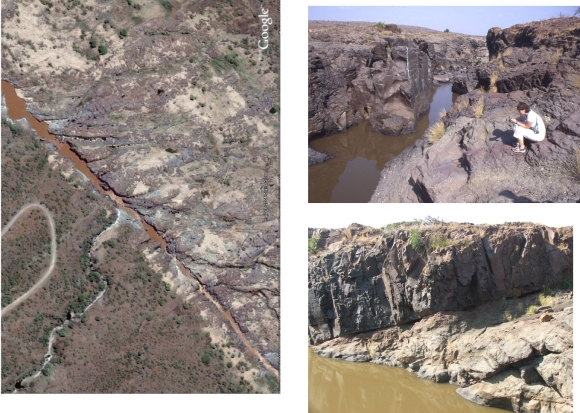 16. Mini-gorge on the Olifants river immediately east of Olifants Camp, Kruger National Park. The gorge was formed by river incision into shallow, eastward-dipping lava flows at the top of the Karoo Supergroup. Flows are comprised of massive, dark, lower portions and light coloured amygdaloidal upper parts (bottom right). A geological walk with Park rangers in attendance was undertaken across this beautifully exposed sequence .
16. Mini-gorge on the Olifants river immediately east of Olifants Camp, Kruger National Park. The gorge was formed by river incision into shallow, eastward-dipping lava flows at the top of the Karoo Supergroup. Flows are comprised of massive, dark, lower portions and light coloured amygdaloidal upper parts (bottom right). A geological walk with Park rangers in attendance was undertaken across this beautifully exposed sequence .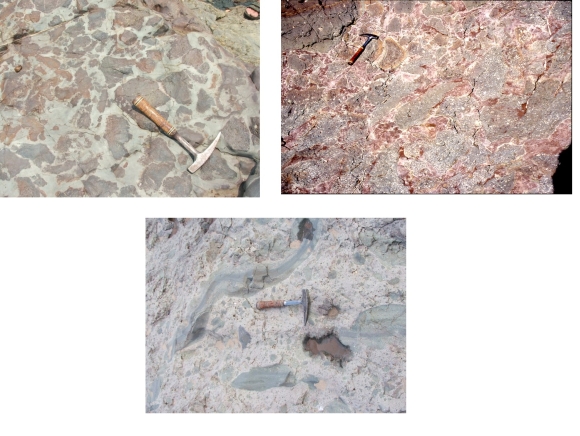 17. Examples of flow-top breccias occuring at the top of lava flows. Volcanic bombs can be seen in light coloured tuffaceous matrix.
17. Examples of flow-top breccias occuring at the top of lava flows. Volcanic bombs can be seen in light coloured tuffaceous matrix.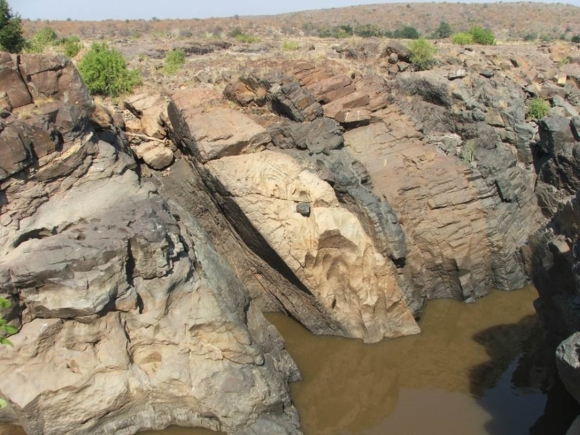 18. Dolerite dyke swarm (including one felsic dyke) dipping steeply westward and intrusive into the sequence of lava flows. These dykes which represent feeders to overlying flows, are the first manifestation of the split of the Gondwana continent and formation of the proto-Indian Ocean
18. Dolerite dyke swarm (including one felsic dyke) dipping steeply westward and intrusive into the sequence of lava flows. These dykes which represent feeders to overlying flows, are the first manifestation of the split of the Gondwana continent and formation of the proto-Indian Ocean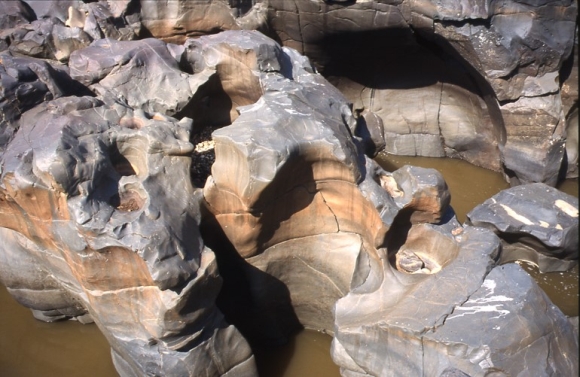
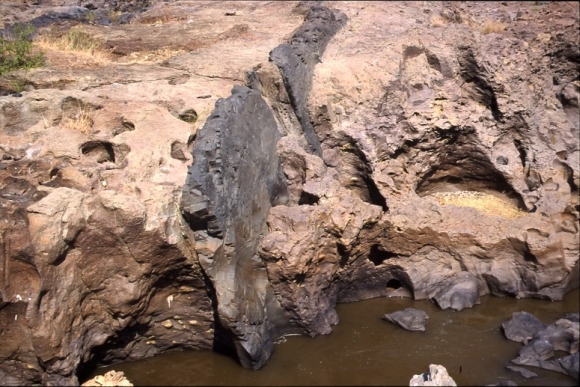 19. Small potholes cut into light coloured amygdaloidal lava and larger potholes cut into massive lava. The process of potholing has been almost entirely responsible for the formation of the Olifants mini gorge.
19. Small potholes cut into light coloured amygdaloidal lava and larger potholes cut into massive lava. The process of potholing has been almost entirely responsible for the formation of the Olifants mini gorge.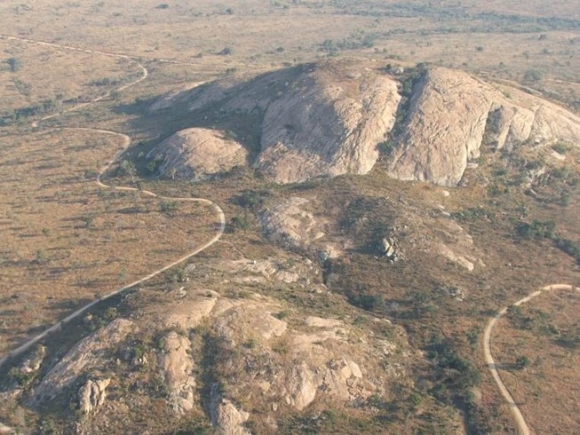
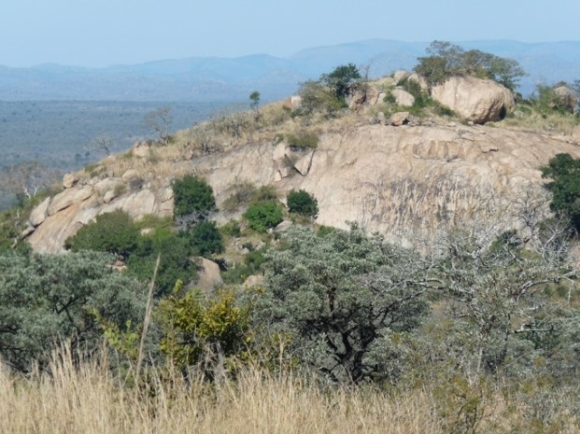
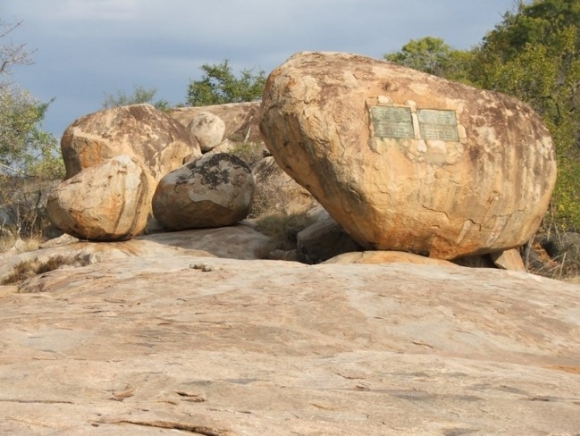
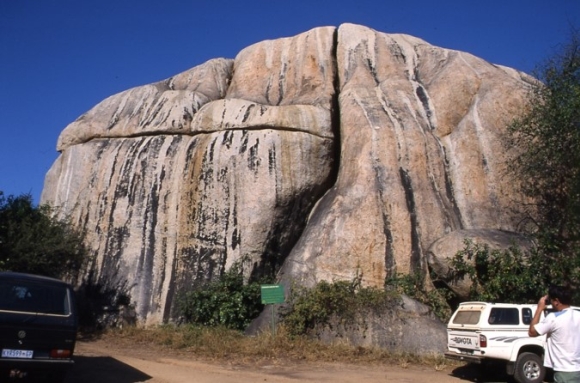 20. Exfoliated and spheroidally weathered monoliths forming resistant homogeneous potassic granites in the southern sector of the Kruger Park. (a & b). Shabeni and Manungu Hills to the north and south of Pretoriuskop respectively. (c). Kruger tablets and (d) Stevenson Hamilton Memorial:- to the north and south of Skukuza respectively.
20. Exfoliated and spheroidally weathered monoliths forming resistant homogeneous potassic granites in the southern sector of the Kruger Park. (a & b). Shabeni and Manungu Hills to the north and south of Pretoriuskop respectively. (c). Kruger tablets and (d) Stevenson Hamilton Memorial:- to the north and south of Skukuza respectively.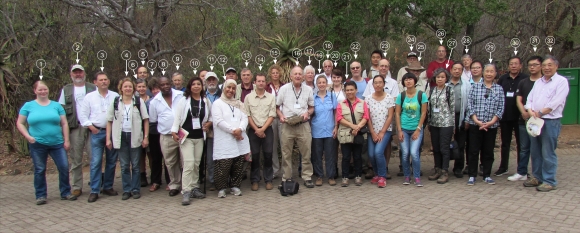 23. Group photograph at Berg en Dal camp with tour leader Morris Viljoen holding a specimen of komatiitic basalt. Three members of the group were not present. Photo by Alison Blackhurst.
23. Group photograph at Berg en Dal camp with tour leader Morris Viljoen holding a specimen of komatiitic basalt. Three members of the group were not present. Photo by Alison Blackhurst. | Title | First Name | Surname | Country | |
| 1 | Ms | Helgadottir | Thrudur | Iceland |
| 2 | Dr | Vladimir | Zacek | Czech |
| 3 | Mr | André | Mobron | Netherlands |
| 4 | Dr | Sabine | Dietrich | Germany |
| 5 | Dr | Bodo | Weber | Mexico |
| 6 | DR | Katrin | Stephan | Germany |
| 7 | Ms | Krystyna | Wolkowicz | Poland |
| 8 | Mr | Sam | Monageng | South Africa |
| 9 | Dr | Roland | Wagner | Germany |
| 10 | Mrs | Silva | Weber | Mexico |
| 11 | Dr | Ali T | Al-Mishwat | Kuwait |
| 12 | Ms | Naiemh | Al-Mishwat | Kuwait |
| 13 | Mr | Roland | Loewer | Canada |
| 14 | Dr | Nicolas | Charles | France |
| 15 | Ms | Jurga | Lazauskiene | Lithuania |
| 16 | Prof | Morris | Viljoen | South Africa |
| 17 | Mr | Ronald | Smith | South Africa |
| 18 | Prof | Stanislaw | Wolkowics | Poland |
| 19 | Dr | Anne | Peslier | France |
| 20 | Dr | Grazina | Skridlaite | Lithuania |
| 21 | Ms | Marlene | Salazar Alvarado | Costa Rica |
| 22 | Mr | Claudio | Gerheim Porto | Brazil |
| 23 | Mr | Alain | Liard | Canada |
| 24 | Mr | David | Knott | USA |
| 25 | Dr | Jan | Novotny | Czech |
| 26 | Dr | Artur | Bastos Neto | Brazil |
| 27 | Ms | Patricia | Moberly | Hawaii |
| 28 | Prof | Ralph | Moberly | Hawaii |
| 29 | Ms | Shu | Lei | China |
| 30 | Prof | Mao | Pan | China |
| 31 | Mr | Kai | Cao | China |
| 32 | Prof | Shanchi | Peng | China |
| The unnumbered were:- | ||||
| Prof | Mingguo | Zhai | China | |
| Dr | Xuejian | Zhu | China | |
| Prof | Diying | Huang | China | |
| Dr | Zhao | Lei | China | |
| Ms | Junsheng | Lu | China | |
| Ms | Yanbin | Zhang | China | |
| Dr | Xi Yan | Zhu | China | |
| Missing from the photo | ||||
| Dr | Petr | Mixa | Czech | |
| Mr | Stanislav | Cech | Czech | |
| Ms | Ana | Huapaya | Costa Rica | |
 Field trips
Field trips  Sponsorship & expo
Sponsorship & expo  Registration
Registration Tours
Tours  Promotion
Promotion 

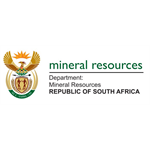












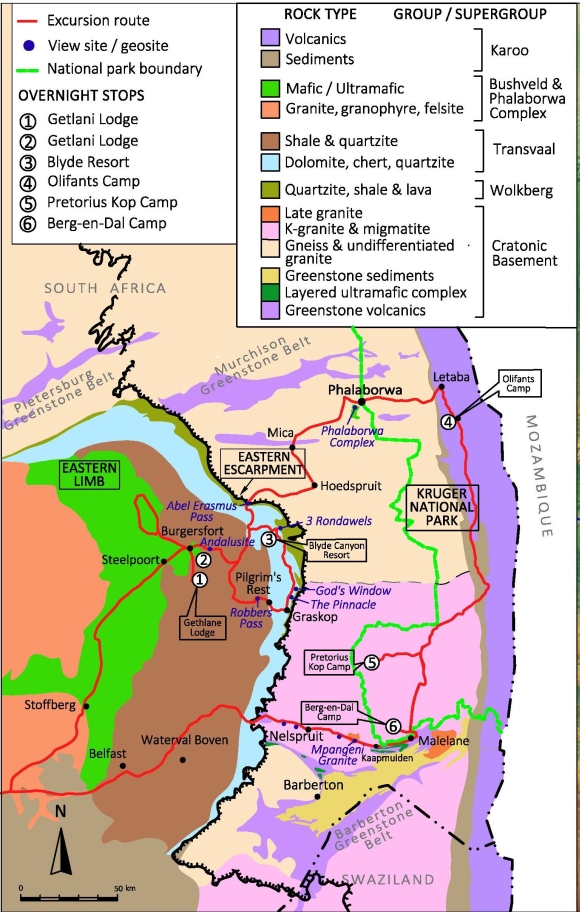
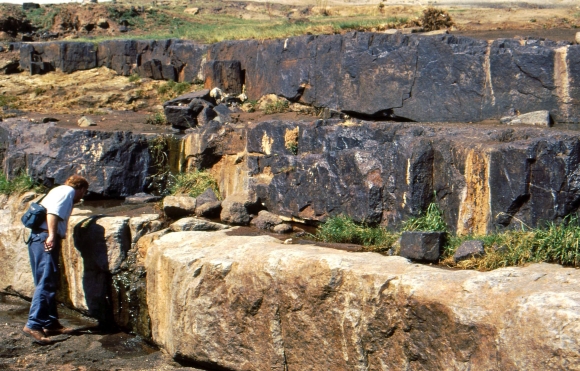
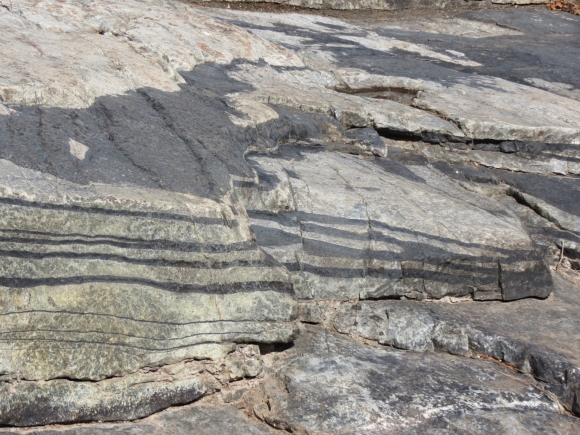
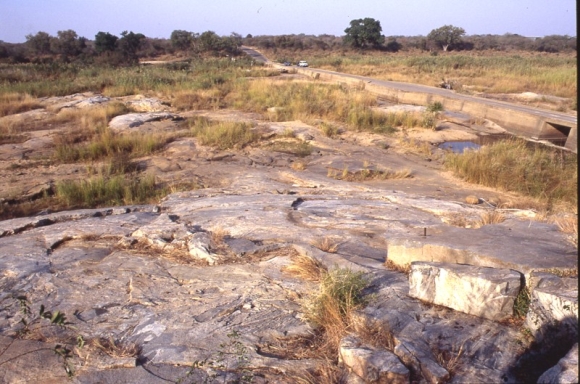
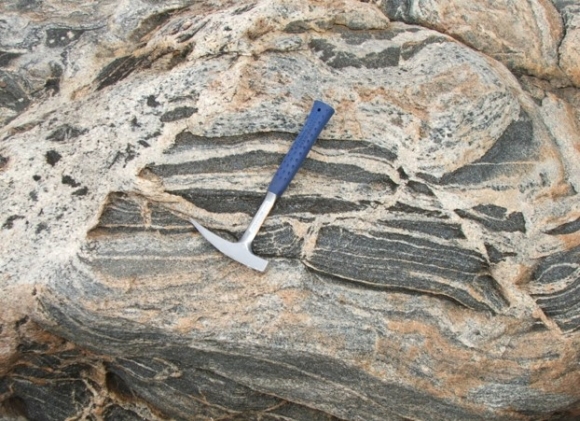
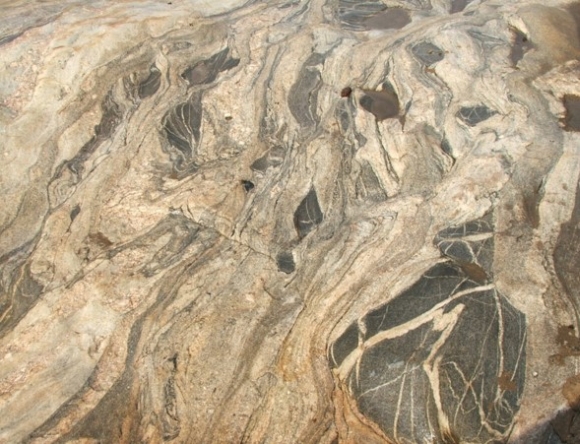
 Conference Programme
Conference Programme  Field trips
Field trips  Sponsorship & expo
Sponsorship & expo  Volunteer
Volunteer  GeoHost
GeoHost  Registration
Registration Tours
Tours  Promotion
Promotion  Publications
Publications


